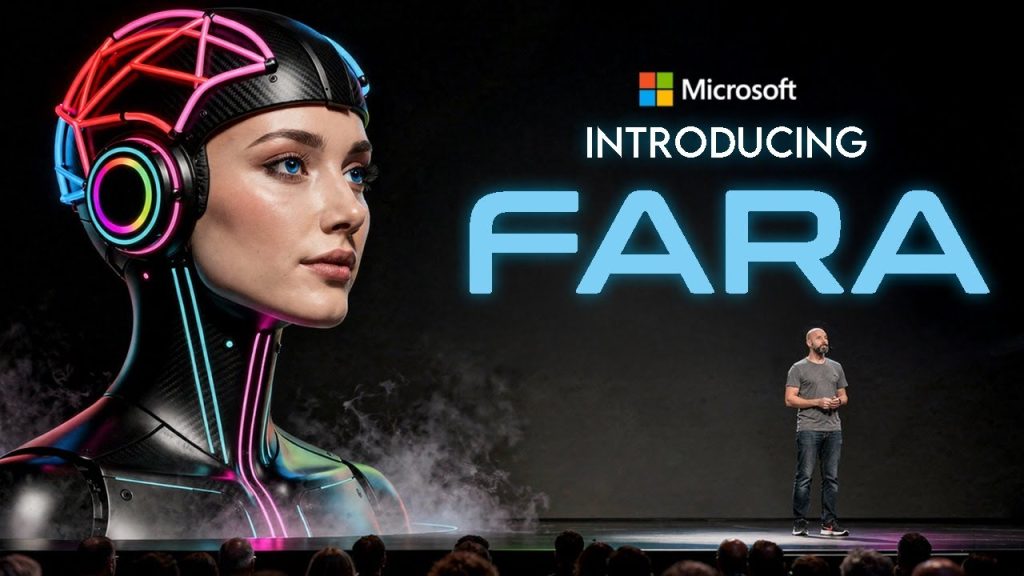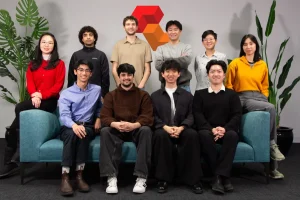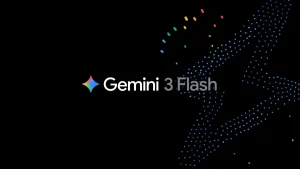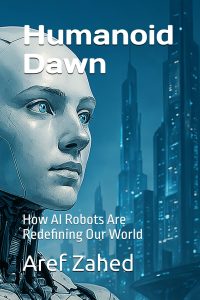Microsoft Unveils FARA, Increasing Pressure on OpenAI

Recent Breakthroughs in AI Technology
The past few days in artificial intelligence have been nothing short of spectacular. Major tech players have unveiled innovative models and tools that reshape how we interact with technology. Here’s a look at some standout developments.
MBZ UAI’s Transformative World Model: PAN
MBZ UAI recently introduced PAN, a groundbreaking model designed to simulate a world over time. Unlike typical text-to-video generators that produce a single clip, PAN retains memory from previous actions. This memory allows it to create a dynamic environment that evolves as you interact with it.
Imagine a miniature digital universe that updates whenever you give it new instructions. If you command it to “turn left,” PAN not only generates a new clip but also adjusts its internal world to reflect that action. This continuity sets PAN apart from conventional video models, which often forget previous context once a clip ends.
Researchers refer to it as a “world model” due to its ability to predict consequences instead of merely generating visuals. Constructed using a combination of respected technologies, PAN integrates a reasoning engine based on Quen 2.5 VL7B and a video generator adapted from Juan 2.1 T2V14B.
Stability in Video Simulation
One of the critical challenges in long video productions is maintaining consistency; objects often shift, scenes drift, and colors change. PAN solves this by processing video in chunks, cleaning up one segment while simultaneously refining the next. This chunk-based approach ensures that transitions remain fluid and grounded in reality.
The model’s training leveraged 960 Nvidia H200 GPUs. This elaborate setup allowed for finely-tuned motion and visual synchronization, pushing PAN ahead of various commercial video models in terms of performance.
Performance Metrics
In terms of action simulation, PAN scored an impressive 70.3% for agent actions and 47% for environment changes. The overall accuracy stands at an exceptional 58.6%, making PAN one of the top-performing open-source world models. Notably, it outshines several commercial systems that remain competitive in this emerging field.
The model also excels as a planning tool, demonstrating a 56.1% accuracy rate under an open AI reasoning loop, showcasing its utility in predicting outcomes based on specified actions.
Google’s Interactive Images in Gemini
While MBZ UAI made waves with PAN, Google opted for a more straightforward, yet practical upgrade through Gemini. With its interactive images feature, users can tap on different sections of a diagram—be it anatomy charts, chemical layouts, or mechanical designs—to reveal definitions, context, and succinct explanations.
This enhancement essentially transforms static diagrams into interactive learning tools, creating a seamless experience for students and educators. The explanations load quickly, streamlining the learning process without the need to switch tabs or interfaces. Available on both mobile and web platforms, this feature targets those in academic settings, aiming to enrich their engagement with educational content.
Perplexity’s AI Shopping Assistant
In the realm of online shopping, Perplexity has launched a new AI shopping assistant that takes a conversational approach. Unlike traditional keyword searches, this AI can remember past interactions and preferences, making recommendations feel personalized and contextually relevant.
For example, if you inquire about the best winter jacket for commuting in San Francisco, it uses your previous searches to refine its answers. The assistant also maintains context throughout the conversation. Initially available in the United States, it partners with PayPal to streamline payments, enhancing the shopping experience.
Alibaba’s AI Glasses: A New Consumer Hardware Frontier
In tech hardware innovation, Alibaba introduced the Cork AI glasses series in China, aiming for mass-market appeal. The flagship S1 and more affordable G1 models come with various features designed to integrate seamlessly with Alibaba’s ecosystem.
These glasses utilize voice and vision AI to provide real-time assistance, enabling functionalities like instant price recognition, translation, navigation, and more. The S1 boasts premium features like dual micro OLED displays, a dual-chip system, and a swappable battery for up to 24 hours of use.
With China witnessing a surge in wearable technology—136.5 million units shipped globally in Q2 2025—Alibaba’s efforts aim to position its ecosystem as a leader in consumer AI innovations.
Conclusion
This wave of advancements across multiple sectors highlights a pivotal moment in AI. From PAN’s simulation capabilities to Google’s educational focus and Alibaba’s consumer tech ambitions, the trajectory of AI is shaping user experiences in transformative ways. As the technology continues to evolve, it’ll be intriguing to see which innovations take the lead in significantly impacting our daily lives over the coming year.
Which development do you think will have the most substantial influence? Share your thoughts in the comments!
#Microsoft #Dropped #FARA #Puts #Pressure #OpenAI
Thanks for reaching. Please let us know your thoughts and ideas in the comment section.
Source link






first
🥇 first
😂😂
Custom Chat GPT
You forgot to say AI never sleeps…. Oh sorry wrong channel 😂
chinese AI glasses.
Small language models used for training the master LLM. Compression is king.
I feel like Microsoft getting serious in the AI field is a big deal. The only major player in the US that has incentive to produce local models that don't depend on a cloud subscription.
Fara is not Microsoft. It's all in Chinese.
A lot of this is really exciting news!
But does anyone out there look at "Instant Buy" in one interface alongside a self-driving agentic/human-simulation model and think, "I'd trust my child with my bank card before THAT?" 6o.o
Independently, these are both good things, but dropping them both at once is really really sus.
The accessibility tree is faster and better than screenshots, the reason they're not relying on it is that it's harder, and a lot of garbage sites/apps don't respect it.
Hi how you all Next-Gen Electric Hover Car | Future Tech
I already know this will not go over very well, but how is the porn industry using AI for their business, besides sex dolls? It seems to me that there is billions to be made by applying AI to the porn industry. All the sex dolls I've seen on YouTube are curmmy. I am more interested in "Her" apps, and pictures/videos.
I love this channel. I hate the creepy white bot.
How can they put pressure on Openai, when they use Openai?
what about cortana 🥲💔